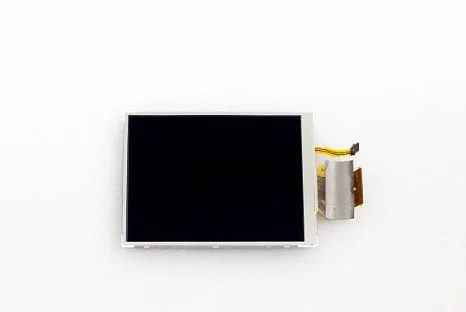How LCD Module Solutions Drive Efficiency and Precision in Edge AI System Design?
In today’s world of interconnected devices and intelligent automation, efficiency and precision have become the cornerstones of modern innovation. While artificial intelligence often takes the spotlight, display technologies quietly serve as its visual backbone. LCD module solutions have evolved from simple display units into essential components that power the usability, clarity, and accuracy of OEM and ODM edge AI systems.
In this article, we will explore how these advanced display solutions are shaping the performance, interaction, and design of edge AI systems across industries.
Understanding the Connection Between Display and Intelligence:
Edge AI systems are designed to bring intelligence closer to data sources, minimizing latency and improving decision-making speed. These systems are deployed in environments where real-time performance is critical—such as autonomous vehicles, industrial robots, and healthcare monitoring devices. To function effectively, they require not only powerful processors but also efficient human-machine interfaces.
Here, LCD module solutions become a vital link. These modules translate data into clear visual information, allowing operators, engineers, or consumers to interpret results instantly. A high-quality LCD display ensures that the decisions made by the AI algorithms are accurately communicated, creating a seamless bridge between machine logic and human understanding.
As OEM and ODM edge AI solutions continue to expand into specialized applications, customized LCD module designs are becoming the standard. Manufacturers increasingly request modules with specific brightness, resolution, and touch functionality to align with the exact requirements of each AI system.
Enhancing Precision Through Advanced Display Technology:
The evolution of LCD technology has been instrumental in boosting the precision of edge AI devices. Modern LCD module solutions come with higher pixel density, wide viewing angles, and low power consumption, which are essential for real-time data visualization.
For instance, in industrial automation systems powered by OEM/ODM edge AI solutions, operators rely on LCD panels to monitor temperature, pressure, and motion parameters. A clear and responsive display minimizes the risk of misinterpretation and ensures timely interventions. Similarly, in security and surveillance devices, LCD screens provide sharp real-time visuals that assist AI-powered recognition systems in identifying anomalies.
Another critical aspect is durability. Edge AI systems often operate in demanding environments such as factories, outdoor kiosks, or vehicles. Rugged LCD modules with reinforced glass and anti-glare coatings guarantee consistent visibility and longevity, even under harsh conditions. This reliability strengthens the overall performance of the AI system, ensuring uninterrupted monitoring and control.
Customization: The Heart of OEM/ODM Edge AI Design
Customization lies at the core of both LCD module solutions and OEM/ODM edge AI solutions. No two AI systems are identical, and display needs vary drastically across applications. For example, a medical diagnostic device requires an LCD with superior color accuracy, while an industrial control panel might prioritize sunlight readability and extended temperature tolerance.
OEMs and ODMs collaborate closely with LCD module manufacturers to design tailored displays that match the intended use case. These collaborations involve considerations such as:
- Screen size and aspect ratio
- Backlight intensity and energy efficiency
- Integration of capacitive touch or gesture controls
- Interface compatibility (LVDS, HDMI, MIPI, etc.)
Through this level of customization, display modules become an integral part of system architecture rather than a generic add-on. This synergy not only enhances the system’s usability but also strengthens the brand identity of the final product by providing a unique user experience.
Driving Efficiency in System Integration
Efficient system design requires minimizing component incompatibility, reducing energy consumption, and improving communication between hardware and software. LCD module solutions contribute to all these areas.
Many modern modules come with built-in controller boards, simplifying integration into edge AI systems. This reduces the development time and enhances signal stability. Energy-efficient backlighting technologies, such as LED-based illumination, further reduce power draw—an essential factor for portable or battery-powered AI devices.
Moreover, multi-interface support allows seamless connectivity with various processors and embedded platforms used in OEM/ODM edge AI solutions. Whether it is an industrial Raspberry Pi setup or a dedicated AI accelerator, LCD modules are designed to synchronize perfectly with multiple data sources.
This compatibility not only enhances system efficiency but also reduces the overall cost of production, giving manufacturers greater flexibility to scale and innovate.
Applications of LCD Technology and Edge AI Across Key Industries:
The partnership between LCD technology and edge AI is revolutionizing several industries:
- Smart Manufacturing:
Factories now rely on AI-driven monitoring systems equipped with LCD touch displays for instant feedback on production parameters. These interfaces allow technicians to quickly adjust machinery based on real-time analytics.
- Healthcare:
Medical devices using edge AI solutions for diagnostics integrate LCD modules that display patient data, scan images, and alerts with high clarity, helping clinicians make quick and accurate decisions.
- Automotive Systems:
In vehicles, intelligent dashboards and navigation systems combine edge AI with LCD panels to display driving metrics, sensor feedback, and road conditions in real time, improving both safety and experience.
- Retail and Smart Kiosks:
Interactive kiosks equipped with OEM/ODM edge AI solutions use LCD displays for personalized advertisements and transaction processing. The combination enhances engagement while streamlining customer service operations.
- Environmental Monitoring:
Edge AI systems used for pollution detection or energy management display key parameters such as air quality or temperature trends through durable LCD modules, offering visual insights that guide sustainable decisions.
These applications underline how the integration of visual and analytical technologies fosters innovation across diverse environments.
Market Insights: Global Demand for Display and Edge Intelligence
The demand for high-quality LCD module solutions continues to rise alongside the growth of edge AI. According to industry analyses, the global market for industrial and commercial displays surpassed USD 15 billion in 2024 and is projected to grow at over 6 percent annually through 2030. Meanwhile, the edge AI market is expected to exceed USD 60 billion by 2028, driven by the increasing need for localized data processing.
As OEMs and ODMs look to streamline design, production, and deployment, integrating efficient display technologies remains a top priority. In Asia, particularly China, Taiwan, and South Korea, advanced LCD manufacturers are supplying tailored display modules for next-generation AI systems. In Europe and North America, innovation is focusing on high-end display integration for medical, defense, and automotive applications.
This global collaboration ensures that both display technology and AI innovation advance hand in hand, creating more reliable, energy-efficient, and interactive devices.
Conclusion:
As industries evolve toward smarter, more efficient operations, the connection between LCD module solutions and OEM/ODM edge AI solutions becomes increasingly significant. Displays no longer serve as passive components but as interactive interfaces that enhance clarity, accuracy, and performance.
Through customization, precision engineering, and seamless integration, LCD technology is empowering edge AI systems to operate at peak efficiency. This collaboration not only advances industrial design but also strengthens global innovation across manufacturing, healthcare, and automation.






